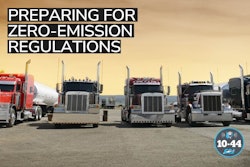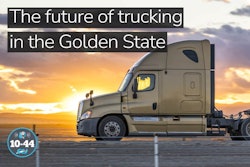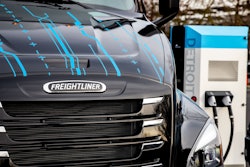The Truckload Carriers Association recently announced that it has joined with other stakeholders to found the Clean Freight Coalition. The aim of this coalition is to educate policy makers on the industry’s strong track record of collaboration in achieving meaningful emissions reductions. It also seeks to ensure that the transition to a zero-emission future is done the right way and does not imperil the nation’s fragile supply chain.
Over the past several decades, the trucking industry has cooperatively developed equipment that has reduced NOx and particulate matter emissions by 98%. In addition, the industry has voluntarily co-founded the EPA SmartWay program and assisted in developing the Greenhouse Gas rules that will reduce CO2 emissions by more than 1.3 billion tons. It would take 60 of today’s diesel tractors to produce the same emissions as one tractor built in 1988 – an amazing accomplishment.
Now, we are faced with an unprecedented ultimatum. The California Air Resources Board, with the blessing of the U.S. Environmental Protection Agency, has issued a rule that would mandate zero-emissions vehicles in heavy duty truck applications. Numerous states have stated their intent or interest in also adopting this strategy. In studying this rule, it has become clear that there are some serious challenges ahead.
We all want clean air and clean water. As an industry, we have proven our commitment to those outcomes. But these new rules require the rapid development of technology that is not quite ready for primetime.
Here are a couple of the challenges related to the most likely near-term solution which is battery electric vehicles (BEVs):
Cost. BEVs are generally running three times the cost of a diesel tractor. Incentive funds will only be available for a small fraction of the tractors required to comply with this rule.
Range. Current BEVs are significantly limited on range and are typically running between 100 and 200 miles, far short of the requirements of the truckload industry.
Weight. Current generation BEVs are between 5,000 to 10,000 pounds heavier than a diesel tractor. Even with the 2,000 lb. weight exemption in California, this limits the type of freight that a carrier can competitively haul
Infrastructure. Infrastructure is not only very expensive, but also carries substantial lead time. Anecdotal stories are indicating that carriers can expect to wait 2 to 5 years before infrastructure projects can be completed. These timeframes are likely to extend if a rush of orders were to be placed.
The power grid. The American Transportation Research Institute’s (ATRI) recent study showed that the current electrical grid is not prepared to electrify the nation’s autos and trucks. ATRI estimates that the U.S. would need to produce 40% more electricity than it does today, with California needing 57% more electricity.
Technology maturity. Today, small handfuls of heavy duty BEVs are being produced, and almost all are only available in a day cab configuration.
Let’s be clear, this technology has a future, and this industry wants to continue to make meaningful contributions to the environment, but we need to confront the realities of the timelines that have been proposed.
Please consider this an open invitation to the decision makers at CARB and EPA: we need to talk. We need to have adult-to-adult conversations about how to move forward. We have a proven track record of collaborating with government and achieving real results. The industry’s input on these rules has been largely ignored, but in order to be successful, we can’t just hope that the current limitations on this technology just go away.













